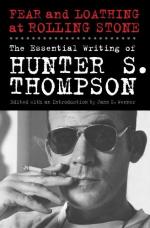|
This section contains 309 words (approx. 2 pages at 300 words per page) |

|
The change in journalism in the sixties showed itself more spectacularly on the fringes than at the center of established institutions. The so-called New Journalism, or "para-journalism," as its critics labeled it, developed parallel to the chief organs of information, influencing them only subtly and gradually, in tandem with the influence of the age….
This work included a broad spectrum of underground writing—political, countercultural, feminist, pornographic, and so on—that dealt with cultural developments ignored, distorted, or merely exploited by the established media. (p. 132)
What these different strands of writing shared was the range of things traditional journalism left out: atmosphere, personal feeling, interpretation, advocacy and opinion, novelistic characterization and description, touches of obscenity, concern with fashion and cultural change, and political savvy. (Not all these features are found in any one writer.) Sometimes these writers developed a new voice simply by including the forbidden, not only...
|
This section contains 309 words (approx. 2 pages at 300 words per page) |

|


